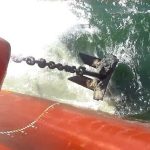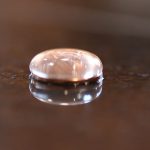Wouldn’t you love to drive a boat that can run at a speed equal to that of the fastest car on the earth? Engineers have been looking for ways to make the transportation on water faster and smoother. Hovercraft, in a way, have proved to be the solution to this problem. So how do they work?
A boat that can run both on land and water! No, we aren’t talking about some hi-tech vehicle from a James Bond movie but a real amphibious vehicle that can run both on land as well as water and that too with the same speed.
Hovercraft, also known as Air Cushion Vehicles (ACV), can run on any type of surface. These vehicles uses a cushion of high pressurized air to lift it slightly above the surface so that there is no contact with the later. The main objective is to remove any form of friction that is generated when a vehicle runs on a surface. This means that a hovercraft runs in air. But how can such a huge thing be lifted in air just with the help of pressurized air? Let’s find out.
How does it work?
Hovercraft run on two main important functions, lifting and propelling. The craft is lifted above the surface with the help of a giant fan that creates a massive air draft in the downward direction which pushes the craft upward. The lift can be of a few centimeters or nches. The fan is moved with the help of an engine which is located at the rear of the craft.
To quarantine the air underneath the craft a flexible rubber skirt is used. This skirt prevents the escape of air from beneath the craft and flexible rubber allows it to move over any obstacle in the way. The skirt has small holes to allow the air to escape, which also helps the craft to move. The edges of the skirt are made of extra thick rubber to create a seal between the skirt and the surface, which prevents the escape of air and also to reduce wear and tear due to the constant contact with the surface.
For the propulsion of the craft, small propeller fans are fitted on the top of the craft. These fans are run by separate diesel engines. These fans pushes the craft forward by creating a backward force. The fans are not like normal fans which pushes the air in a spiral way but are fitted with stationary blades which resist the spiral flow of air and thus provide a greater thrust.
For steering the craft, rudders are installed behind the fans. The rudder swivels the air from side to side to provide the required steering.
Stability and additional information
As the hovercraft moves without any contact with the surface, it is imperative that proper stability is maintained. For this the airflow should be adequate, cause if the air pressure generated is more than the craft will be lifted to a greater height which can make the craft to tip. If the air pressure is lower than required than the craft will remain grounded.
It is also imperative that the air cushion is equivalent throughout the surface of the base of the craft to maintain stability. Also it is proved that larger the base surface area of the craft greater would be the stability, but this would reduce the speed considerably.Also, the part of the craft which mounts the fan and engines would require additional air pressure to lift them off the ground.
The total amount of weight a hovercraft carries depend on the lift the fan can generate. As we know that pressure= force/ area, the higher the pressure generated the better weight carrying capacity craft will have. Which also means that broader the surface area , the greater the weight carrying capacity.
Hovercrafts are used in military and in carrying goods and passengers. They can run at a speed of 70 – 120 Km/hr.


